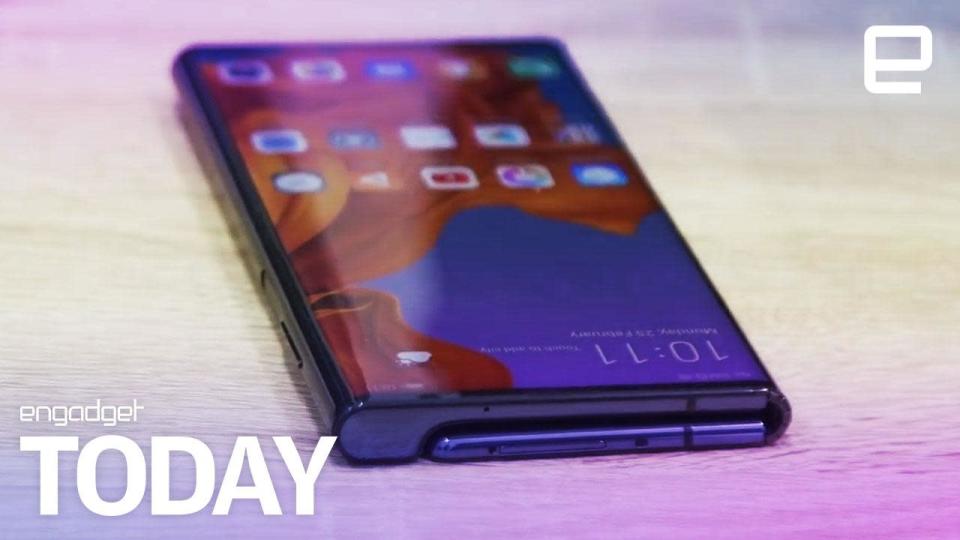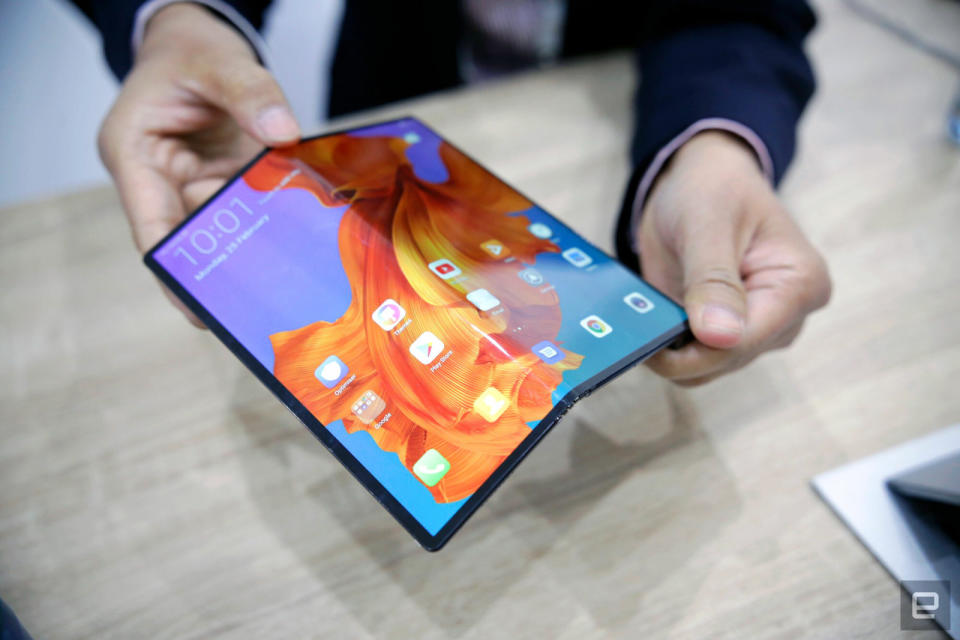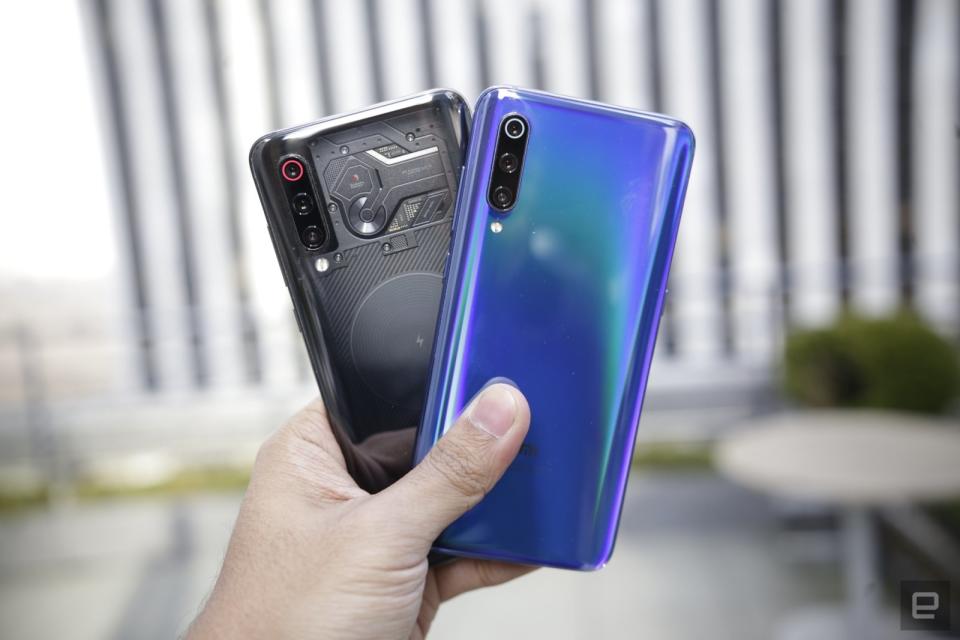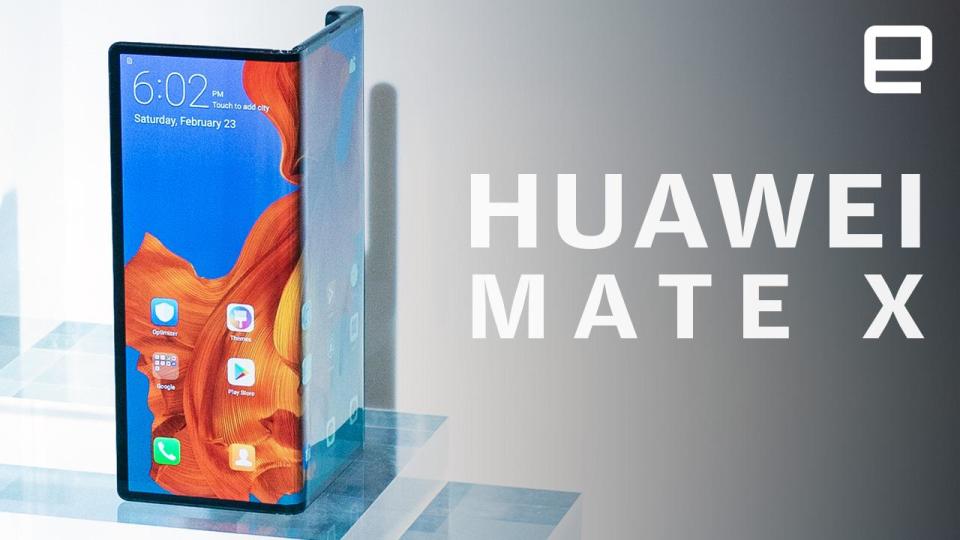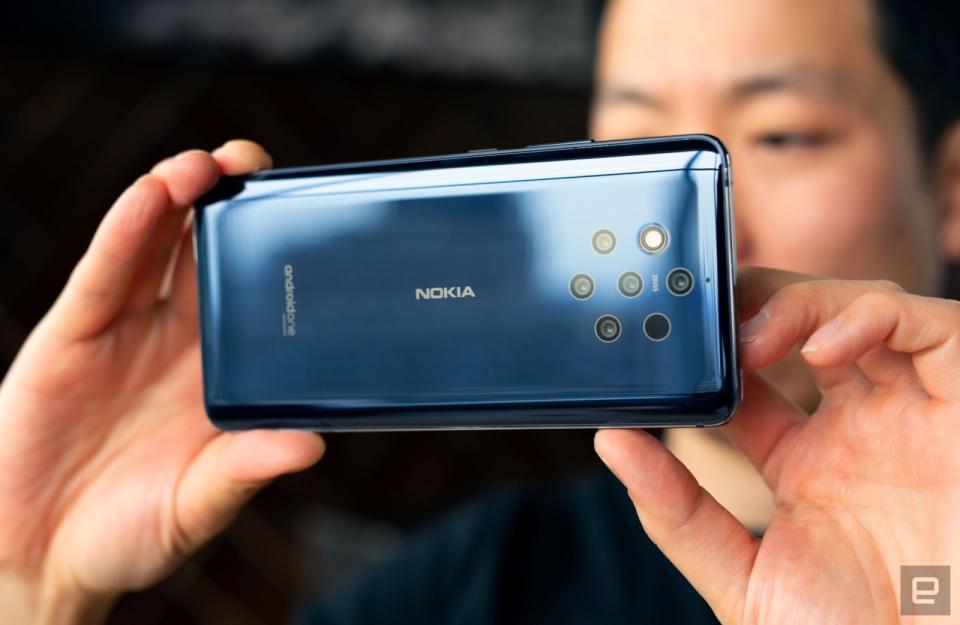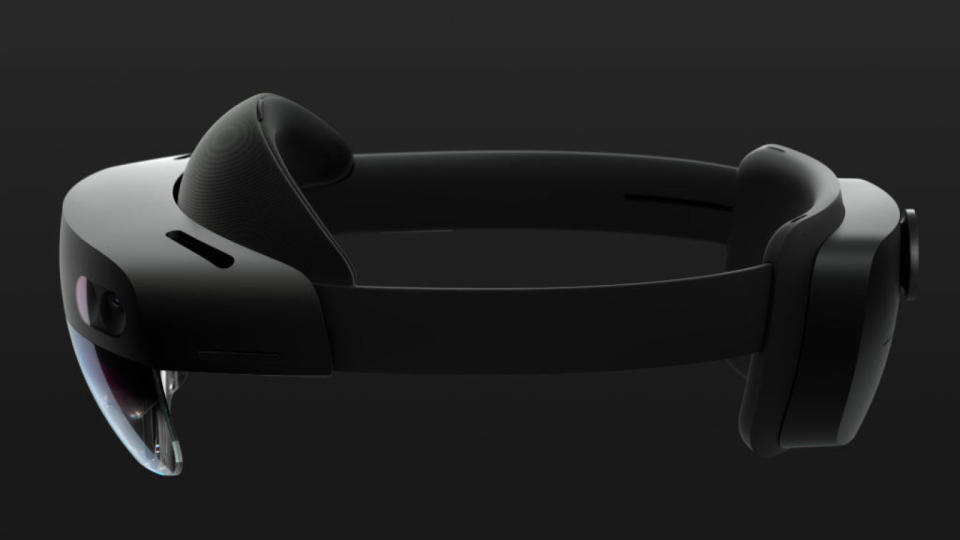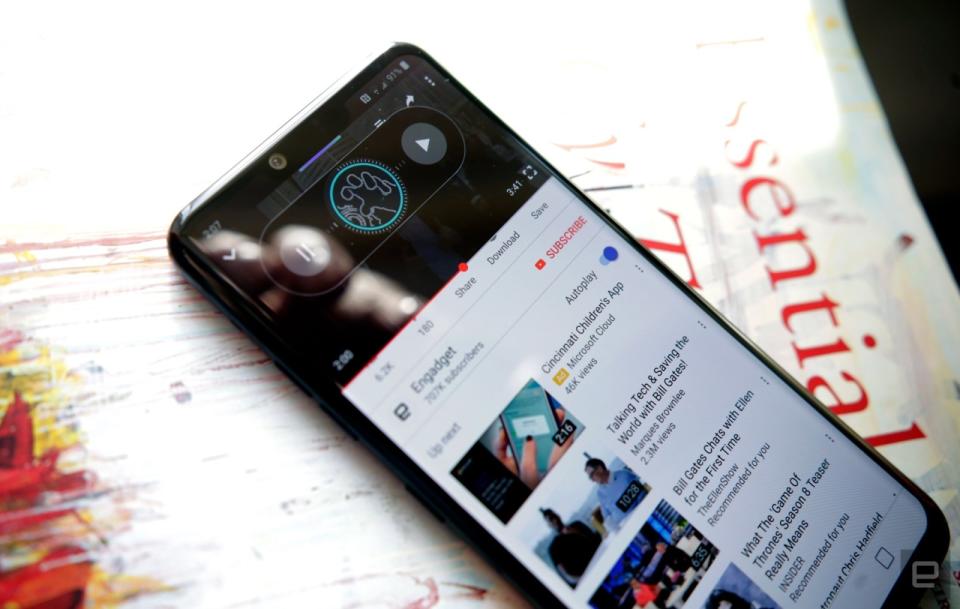Here's what you missed over the weekend at MWC 2019
Foldable phones, 5G and mixed reality galore.
While you're enjoying a cup of coffee or tea to kickstart your week, there's a lot of MWC news to catch up on from over the weekend. Huawei, LG, Microsoft and others all hosted events in Barcelona yesterday to show off their wares, ranging from foldable phones to 5G handsets and mixed reality. We realize you may have snoozed Sunday away, so we've summed up all that you might've missed so far in one handy spot.
Xiaomi Mi 9 is heading to Europe
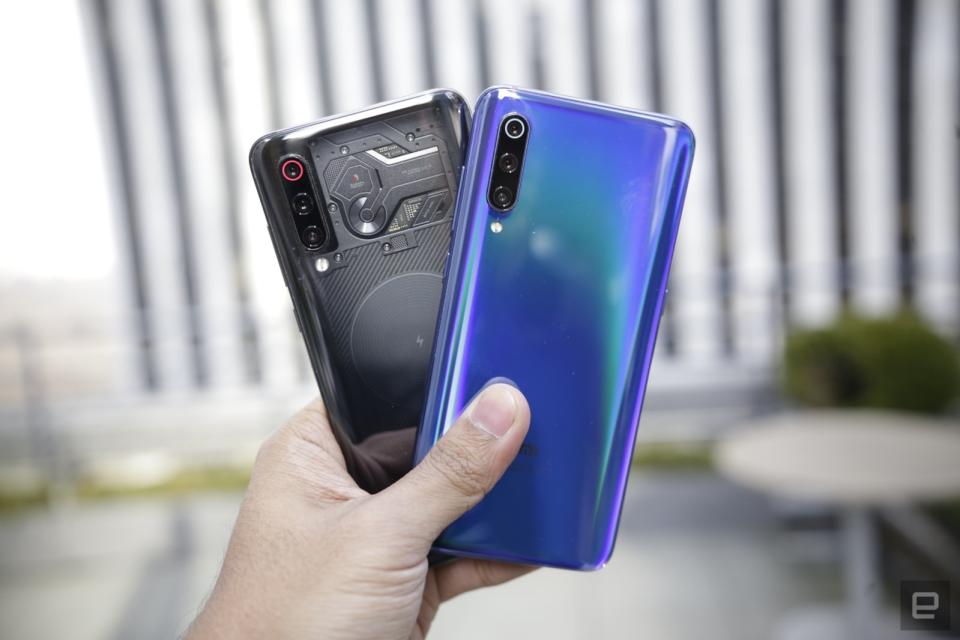
Xiaomi pulled the wraps off its new Mi 9 flagship before we even boarded the plane. At a press event yesterday at MWC though, the company announced availability. Specifically, the phone will arrive in Europe on February 28th. When it does, the Mi 9 will be available in 64GB or 128GB options for €449 (about $510) and €499 (about $566) respectively. For those prices, you can expect a 6.39-inch, FHD+ (1080x2340) AMOLED display, complete with teardrop notch and 19:6 aspect ratio. Inside, a Qualcomm Snapdragon 855 processor powers the show, with 6GB of RAM and a 3,300mAh battery to round out the spec sheet. If you're hoping to snag one of the triple-rear-camera units in the US, we've got bad news: there are no plans to bring the Mi 9 to the States.
Huawei's folding (and expensive) Mate X
With the Galaxy Fold fresh on everyone's mind, Huawei chose MWC to debut it's foldable phone, the Mate X. It may not have been the first out of the gate, but the company may have the most compelling folding handset thus far. Where the Galaxy Fold closes inward with the screen tucked inside, the Mate X folds outward. It's also slightly slimmer than the Fold and packs a larger 4,500mAh battery. Huawei tucked three cameras and the power button into a long narrow bar, rather than integrating them into the display. Of course, that means no notch, and the added depth of the bar doubles as a grip of sorts. And while Huawei's foldable model packs 5G connectivity, it's more expensive than Samsung's version at €2,299 (about $2,600).
A foldable phone and 5G weren't the only things Huawei wanted to discuss in Barcelona. The company also had some laptop news to share. At the top end, there's the Matebook X Pro. There are expected upgrades to the processor (up to 8th generation Intel Core i7), RAM (up to 16GB) and storage (up to 1TB SSD) alongside a discrete graphics option. Despite those changes, Huawei kept the Matebook X Pro thin and light, and it still carries a MacBook-like design that starts at €1,599 (around $1,800). The company also discussed the nearly all-screen Matebook 14. At €1,199 (about $1,360), the list of specs is solid, except for a pair of USB-A ports and one lonely USB-C jack. It is 2019, after all.
Nokia revives PureView
If you've been yearning for another Nokia PureView phone, you're in luck. Following HMD Global's acquisition of the mobile photography brand from Microsoft, the path was paved for a new model, and it's a doozy. The Nokia 9 PureView crams five cameras around back that work in tandem for phone-based snapshots. Senior editor Chris Velazco was able to test the handset in NYC ahead of MWC, and despite some gripes with the camera interface, there's a lot of potential here. The Nokia 9 PureView may seem like an experiment now, but it could also offer a glimpse at the future of phone photography. Heck, maybe sometimes more is more.

HMD Global also revealed a number of mid-range and low-range Nokia phones yesterday, complete with near-stock Android. There really seems to be something for everyone here, starting with the Nokia 4.2. Yes, the specs are unquestionably, mid-range, but the clean look of Android Pie is nothing to balk at. There's also the Nokia 1 Plus for Android Go users and the $35 Nokia 210, which HMD says is its cheapest internet-connected device. However, it can last weeks on a charge, a feature that could be priceless for many.
Microsoft's new and improved HoloLens
Since the moment Microsoft sent out invites for an event at MWC, expectations were high that we'd meet a new HoloLens headset. And we weren't disappointed. The HoloLens 2 offers a more than doubled the field of vision from the last model (though Microsoft didn't provide exact numbers), a new "time-of-flight" depth sensor to track hands without controllers and increased overall comfort. The $3,500 HoloLens 2 is still mainly an enterprise device and the company spent dedicated a lot of stage time to how it could benefit large-scale businesses.

Before it took the wraps off of a new HoloLens headset, Microsoft announced a new home for Kinect. And it's probably not what you're thinking. The good news is Azure Kinect packs in a depth sensor, high-definition camera and microphones in a compact device. The bad news is it's designed for enterprise use. AVA Retail has been using the unit for things like self-checkout and grab-and-go shopping, just as one example. Indeed, the AI and cloud power that Azure offer is the key difference between this and older Kinect cameras. It costs $399, and Microsoft has already opened up preorders for developers.
Epic Games' Tim Sweeney was on hand to announce that the company's Unreal Engine is coming to HoloLens. It should be available for developers in May, but he said it's already "up and running." Again, this news probably isn't the sort of thing you're thinking. Don't expect to play Fortnite in mixed reality immediately, even though there were hints that could come at some point in the future. Unreal Engine compatibility is aimed at enterprise use for things like more realistic 3D for the time being. You know, until the cost of HoloLens is a little more consumer-friendly.
LG gets weird
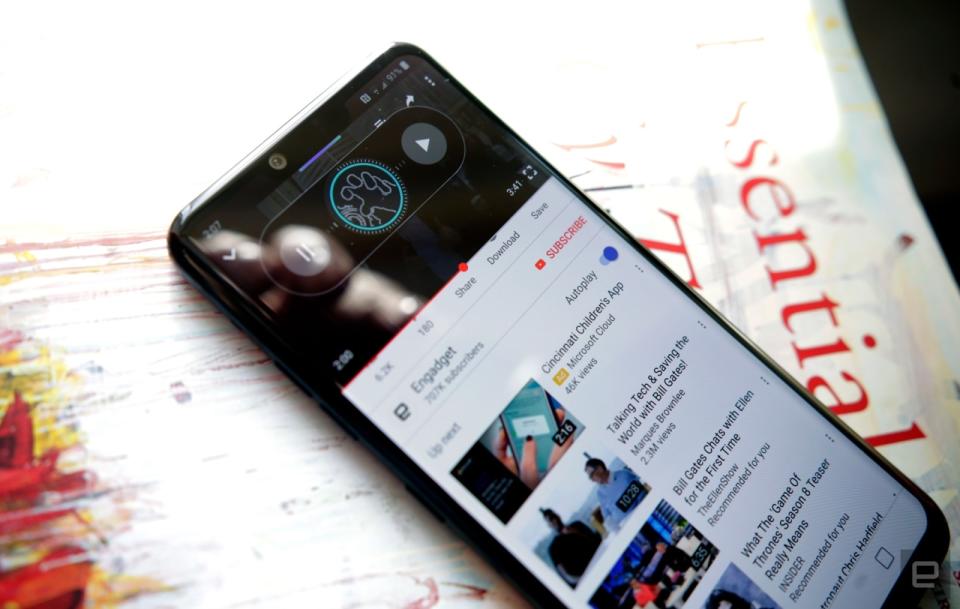
LG does have a foldable phone of its own in the works, but it wasn't announced at MWC, and it apparently won't be anytime soon. Instead, the company took a half step towards foldables with a so-called Dual Screen add-on for its new 5G V50 ThinQ. The accessory is basically a phone case with a second display for multitasking, gaming and more. You can't stretch apps all the way across it, and you probably wouldn't want to since there's a significant gap between the two panels. What you can do though is run two apps side-by-side, situate a game controller on one display 3DS-style or use some handy camera features that should make difficult shots a little less awkward. Unlike the V50 ThinQ, the Dual Screen device won't be available in the US.
In a number a teases ahead of MWC, LG made it clear what we could expect from it's G8 ThinQ. A key feature is the ability to control some functions via gestures without having to touch the device -- or as LG calls it, AirMotion. There's also a palm scanner for what the company promises is enhanced biometric security and the display doubles as the main speaker. Yes, you read that correctly. LG has employed the Crystal Sound technology we've seen, and heard, in its OLED TV panels as the G8 ThinQ's primary audio source. It's a weird phone, but the strangeness is pretty interesting. More importantly, the bag of tricks seems to be useful at first blush, but we'll have to see how easy all of those tools are to use in everyday scenarios.
We've taken some time to fuel up on cortados and café con leche, and we're scouring the show floor now that's officially open for the week. There's plenty more to come from Barcelona, even if a lot of flashy announcements were part of the weekend pre-party.
